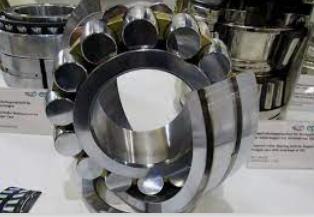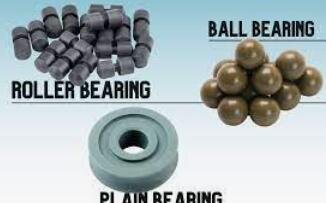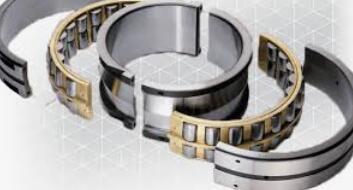Bearings are essential components in mechanical systems, facilitating smooth and efficient motion between parts. By reducing friction, they allow for both rotational and linear movement, which improves the overall performance and reliability of machines and devices.
Among the various types of bearings, ball bearings and roller bearings are frequently used. Despite their shared purpose, there are instances when these two types aren’t compatible and can no longer coexist in specific applications.
Why Did Ball Bearings and Roller Bearings Part Ways?
Incompatibility in Load Handling
Different Operational Conditions
Contradictory Design Requirements
This article delves into the critical role bearings play in mechanical systems, outlines the differences between ball and roller bearings, and examines the reasons behind their separation. Additionally, we’ll explore the impact of this divide on mechanical systems and the importance of selecting the correct type of bearing for specific applications.

Bearings are critical elements in mechanical systems, enabling smooth motion and reducing friction between moving parts. They are commonly found in various applications, from vehicles and industrial machinery to household appliances and aerospace systems.
By creating a low-friction interface, bearings play a key role in minimizing wear, extending the life of components, and enhancing the overall efficiency of systems.
Ball bearings are spherical rolling elements placed between two concentric rings. These bearings are designed to handle radial and axial loads, making them ideal for applications with moderate to high speeds and lighter loads. Common uses for ball bearings include electric motors, fans, bicycles, and smaller machinery.
Unlike ball bearings, roller bearings use cylindrical or tapered rolling elements. These bearings are better suited for carrying heavier loads and are often employed in applications that operate at lower speeds and require higher load capacities. Roller bearings are frequently used in heavy machinery, conveyors, large motors, and automotive systems.
Thrust bearings are specialized to handle axial loads and are designed for components that must endure axial forces. These bearings are commonly found in aircraft engine gearboxes, automotive transmissions, and thrust reversers.
Also known as bushings or sleeve bearings, plain bearings consist of a cylindrical lining, often made from low-friction materials, that directly contacts a shaft or housing. They are ideal for applications with lower speeds and are typically used in environments that require lubrication. Plain bearings are commonly used in pumps, compressors, and various types of industrial equipment.

Ball bearings feature point contact between the rolling balls and the raceways, facilitating smooth and efficient rotational motion. In contrast, roller bearings utilize line contact, which enhances their load-bearing ability but results in slightly higher friction.
Roller bearings offer superior load-carrying capacity compared to ball bearings due to their design. They spread the load over a broader contact area, making them suitable for handling larger loads and enduring greater forces.
Ball bearings exhibit lower friction than roller bearings, contributing to better efficiency at high speeds. The point contact design reduces the contact surface, minimizing frictional resistance.
Although roller bearings have marginally higher friction, they are ideal for applications with slower speeds and heavier loads.

The primary reason for the separation between ball and roller bearings is their distinct load-handling abilities. Ball bearings are ideal for applications involving moderate loads and high speeds, where low friction ensures efficient operation. In contrast, roller bearings are better suited for scenarios involving heavy loads and slower speeds due to their larger contact surface area.
The difference in operating conditions also contributes to the split between ball bearings and roller bearings. Applications that experience fluctuating loads, speeds, and environmental factors may require one bearing over another. As the demands of an application evolve, it may lead to a shift from one bearing type to the other.
At times, conflicting design needs can result in the breakup between ball and roller bearings. For example, when a system needs a high load capacity and a compact or lightweight design, it may lead to choosing one bearing type over the other. This balancing act between design requirements often leads to selecting the more suitable bearing, leaving the other behind.
The separation between ball and roller bearings underscores the critical need for correct bearing selection in mechanical systems. Understanding the application’s requirements, load conditions, and operational parameters is essential to choosing the most appropriate bearing. Selecting the wrong bearing can lead to premature failure, reduced efficiency, and compromised overall system performance.
The split between ball and roller bearings highlights the importance of ensuring compatibility among all components in a mechanical system. Bearings, shafts, housings, and lubricants must all work together seamlessly to guarantee optimal performance and durability. If there is any mismatch between these components, it can result in excessive wear, increased friction, and diminished reliability.
The incompatibility between ball bearings and roller bearings directly affects the performance and reliability of mechanical systems. By selecting the correct bearing type for a specific application, a system can operate efficiently, handle the required loads, and produce the expected results. Failing to make the proper choice may lead to breakdowns, higher maintenance costs, and potential safety risks.
In conclusion, ball and roller bearings play crucial roles in mechanical systems. Although they share the common purpose of minimizing friction and facilitating smooth motion, their distinct designs and load-bearing capacities make them ideal for different applications.
The separation between ball and roller bearings typically arises from factors like differences in load handling, varying operational conditions, and conflicting design requirements. This emphasizes the importance of selecting the correct bearing, ensuring component compatibility, and recognizing how these decisions influence mechanical systems’ overall performance and reliability.
By understanding the specific characteristics and appropriate uses of both ball bearings and roller bearings, engineers and designers can make well-informed choices that ensure the optimal performance of their systems.